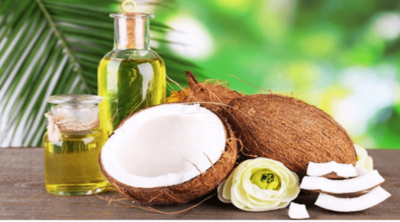
Geographic tongue is an inflammatory condition involving the tongue accompanied by red patches with raised margins. The geographic tongue symptoms covered in the following article will help you learn more about this harmless disorder.
Have you noticed a map-like patch appearing on your tongue? Are there cracks on the tongue surface or do you find the tiny papillae on your tongue missing? If yes, then you maybe suffering from geographic tongue. This is a harmless condition that does not indicate any form of infection or cancer. It affects 2% of the people and may appear in other areas of the mouth as well. Let us have a look at the signs and symptoms of geographic tongue in the following paragraphs.
What is Geographic Tongue?
Geographic tongue is an inflammatory condition that causes changes in the pattern of the surface of the tongue. Smooth red patches with raised margins start appearing on the tongue. The margins of these patches maybe grey, yellow or white in color. The pattern resembles mountain ridges and therefore the condition is called geographic tongue. There are many other names of this benign condition that include erythema migrans, benign migratory glossitis, benign inflammatory glossitis, etc.
Causes
The exact cause of geographic tongue is unknown. It maybe an allergic reaction or hypersensitivity reaction to certain factors like food, drinks or tobacco. Sometimes, it may appear during stress, illness or changes in hormones. This condition is said to run in families. People who are sensitive to certain foods or suffer eczema or asthma are more prone to geographic tongue. Vitamin B deficiencies are also said to be linked to this inflammatory tongue condition.
Signs and Symptoms
Well, there are no unusual geographic tongue symptoms. One may not feel itchy or have a bad taste in mouth. The tongue may become sensitive to certain foods like spices and appear to sting. The most common symptom of geographic tongue is the patchy appearance. The tongue continues to change in appearance all the time. Only the top surface and the edges are affected.
The top surface of the tongue is covered by tiny protrusions called papillae. These patches on the tongue develop grayish borders and there are missing papillae on this reddish area. One may even observe yellowish or grayish discoloration due to a yeast infection. These patches appear for short time and then resolve on their own. They may even change their shape or size. One may even observe fissures on the tongue and develop temporary tongue numbness.
What actually happens in geographic tongue is that red patches develop on the tongue over a few days. These patches look too red and raw. The papillae on the tongue are forever growing rapidly and may take over the affected area within a few days. However, these red patches spread to other regions of the tongue and one may observe changes in size or shape. Eating tomatoes, eggplant, walnuts, spicy foods, sour foods, citrus fruits, mint, etc. can cause irritation, burning or slight swelling of the tongue.
Remedies
There are no specific remedies, cures or treatment options for geographic tongue. Many times, people are totally unaware of their condition and never seek any treatment. Also, those who are aware of the symptoms, try to avoid spicy and sour foods as well as smoking. Those who are under great deal of stress are advised change in lifestyle as well as meditation. A steroid ointment is prescribed to those who suffer from typical tender tongue symptoms. If burning sensation is experienced, antihistamines are prescribed.
The geographic tongue symptoms rarely cause any kind of major discomfort to the patient. The condition does not require any persistent treatment and in most cases, goes unnoticed by the patient. One should avoid eating spicy and sour foods as well as avoid smoking and cut down on their alcohol intake. This will avoid irritation of the tongue, especially in those prone to geographic tongue condition.


